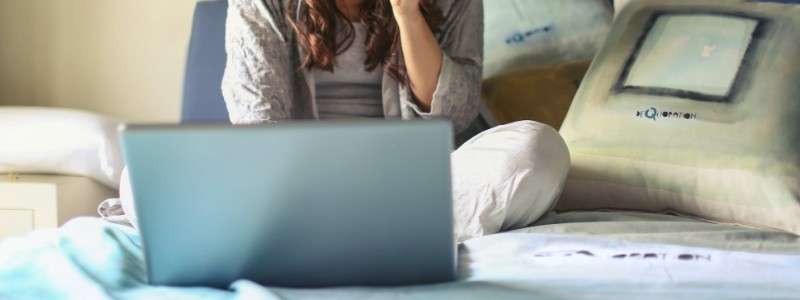
Head of Online Medical Content

Audiology Expert

Bloom Hearing vs Scrivens Hearing Aids
What are the differences between hearing aid retailers Bloom Hearing and Scrivens?
Researching hearing aid providers in the UK
When embarking on the journey to find a hearing aid provider in the United Kingdom, thorough research is essential. Start by exploring reputable sources such as professional associations and customer reviews to identify providers with a solid track record.
Consider factors such as the provider's expertise, certifications, and years of experience. Look for those offering a diverse range of hearing aid brands and models to ensure a tailored solution. Investigate their customer service, including aftercare support and warranty options.
Check for locations near you and inquire about pricing and insurance coverage. By conducting diligent research, you can make an informed decision and find a trusted hearing aid provider in the UK.
In this article, we look at two hearing aid retailers in the UK to give clarity and comparison.
Bloom vs Scrivens, which one is better?
We understand the list of complexities when faced with looking for the right hearing healthcare, hearing aids, and aftercare.
Finding the balance between such factors as the price of hearing aids for your loss, and the right private hearing services locally and available audiologists near you is tricky to achieve.
All the different services that both the high street retailers and independent audiologists provide can at first seem confusing. Our independent hearing aid company's prices are cheaper than those of the high street.
What are the differences between each hearing aid retailer? Who comes out on top among hearing aid consumers?
Well, being a network of independent audiologists, our hearing aids are genuinely cheaper than the high street and independents come out on top overall for consumers.
But if we were to compare the various hearing aid retailers, we would find some differences between their services and what they can provide for your hearing.
Like with anything in life, we are put off by what we don’t understand, so educating yourself is key to the success of your hearing care journey. We feel that researching all the hearing aid companies available to you is a good place to start.
Here we look at the pros and cons of Bloom Hearing and Scrivens, so hopefully, you will gain some insight into what services and products they can offer you. This way, you can make an informed decision on what your next step will be more confidently.

Scrivens Versus Bloom Hearing
Who is Bloom Hearing?
Bloom hearing aids
Bloom Hearing used to be known as Regional Hearing Services, which was until they were bought by one of the big manufacturers of the audiology industry – Widex. With around 20 branches and 50 dispensers, they are still one of the smallest UK hearing aid retailers.
As a result of their affiliation with Danish manufacturer Widex, you might find that they may favour Widex hearing aids when they come to show you the devices available.
Regional Hearing Services started off as a small family business that employed only friends and relatives at their head office in Cornwall. They are known for being genuinely nice people and are respected in the audiology industry.
For such a small national company and unlike other similar competitors on the high street, Bloom Hearing offers a full home visiting service nationwide. This is possible due to a large percentage of their dispensers not being branch-based.
What are the advantages of Bloom Hearing?
- They offer a nationwide home visiting service for convenient hearing care.
What are the disadvantages of Bloom Hearing?
- As mentioned earlier, they can be quite biased when it comes to showing consumers the hearing aids available. Due to their affiliation with Widex, you might find that they will offer devices from this manufacturer above others.

Bloom Hearing Versus Scrivens
Who is Scrivens?
Scrivens hearing aids
Scrivens was founded as an optician in 1938 by brothers Mark and Nicholas Georgevic, and their head office is based in Birmingham.
They eventually made the transition into selling hearing aids in the 1950s, and at the same time rebranded their name for their hearing aid side of the business to ‘The Hearing Company’.
Their brand name then changed back to Scrivens in 2014. With around 300 locations, this company is one of the largest chains in the UK. However, many of these locations are only manned at most twice a month.
What are the advantages of Scrivens?
- They are considered to be good according to their consumers in regards to their general facilities.
- All their locations are observed as clean, quiet, and comfortable by those who have visited.
What are the disadvantages of Scrivens?
- Scriven's overall consumer experience was rated rather poorly in the latest Which? Report survey.
- The hearing aid collections, look, suitability, and comfort for the device wearer were considered to be poor.
Please note that the above information was taken from the latest Which? Report and therefore a reliable source.
How does Hearing Aid UK compare?
- We are impartial when it comes to offering hearing aids to our customers. So, after your hearing test, analysing your results, and taking all your unique wants and needs into consideration, you will always get recommended a hearing aid that's the right hearing solution for you.
- We have a great selection of hearing aid choices, as we work with all the manufacturers in the industry. Therefore, we can provide you with every hearing aid available on the market.
- Our prices are the lowest globally in the industry, and we are always transparent with our prices and publish them online.
- All our prices include testing, fittings, and aftercare for the life of the hearing aids. What you see is what you get!
- We have nationwide coverage with our network of over 200 independent professional audiologists. Our dispensers carry out their services from stores, practices, day centres, and in the comfort of your own home for no extra cost.
- We are proud of our network, who are all qualified and registered with the HCPC (Health and Care Professions Council) - so you will always gain from professional service and an excellent customer experience.
- The latest Which? Report states that independent audiologists come out on top when all factors of their hearing healthcare are considered. Therefore, as an independent hearing aid company, we come highly recommended by consumers.
Why Choose Us?
- FREE Hearing Tests
- Best Hearing Aids and Prices
- FREE Aftercare for Life
- FREE Home Visits
- 200+ Local Audiologists
- 60 Day Money Back Guarantee
Need more information about Scrivens or Bloom hearing aids?
If you have had a quote from either Bloom Hearing or Scrivens then you should get a second opinion from us. We feel we have more to offer you and your hearing needs and are confident we can beat the quotes you have received.
Call us free on 0800 567 7621 to speak with one of our audiologists who can go through the benefits of our services or compare our prices to that of Bloom or Scrivens.
Other hearing aid retailer articles you might like...
 Specsavers vs Amplifon: What are the differences?
Specsavers vs Amplifon: What are the differences?  Switching to a New Hearing Aid Provider
Switching to a New Hearing Aid Provider  Boots Hearingcare vs Hidden Hearing: What's the difference between the two?
Boots Hearingcare vs Hidden Hearing: What's the difference between the two? What's included in our hearing aid prices?
Watch the video below about our hearing healthcare services
Our specialist service includes:
Do not spend hundreds of pounds without getting a second opinion from us.
Please call us on 0800 567 7621
 Not only are the prices great, but the service is fantastic! Many thanks to your team.
Not only are the prices great, but the service is fantastic! Many thanks to your team.Common FAQs when researching hearing aids and hearing loss
In general, any audiologist will always recommend to you the hearing aid model that best suits your needs. Here is a useful checklist to make sure that is the case.
- Audiologist's level of knowledge: The audiologist you have seen will hopefully have a wide knowledge of all available hearing aids; however, some will only be familiar with a small number of brands and, therefore, may not really be in a position to know which model is the best for you. It is OK to challenge their recommendation and ask them to justify why this particular brand is the one for you.
- Do research: Read about the hearing aid that was recommended. Does it seem like it will suit your lifestyle? Does it have more or fewer features than you need?
- Be aware of sales targets: Many high street retailers have specific tie-ins to a particular manufacturer/brand. The hearing aid they have suggested may still be the correct one for you, but do your research so that you know why they might have recommended it.
If you have significant hearing loss in both ears, you should be wearing two hearing aids. Here are the audiological reasons why:
Localisation: The brain decodes information from both ears and compares and contrasts them. By analysing the minuscule time delays as well as the difference in the loudness of each sound reaching the ears, the person is able to accurately locate a sound source.
Simply put, if you have better hearing on one side than the other, you can't accurately tell what direction sounds are coming from.
Less amplification is required: A phenomenon known as “binaural summation” means that the hearing aids can be set at a lower and more natural volume setting than if you wore only one hearing aid.
Head shadow effect: High frequencies, the part of your hearing that gives clarity and meaning to speech sounds, cannot bend around your head. Only low frequencies can. Therefore, if someone is talking on your unaided side, you are likely to hear that they are speaking, but be unable to tell what they have said.
Noise reduction: The brain has its own built-in noise reduction, which is only really effective when it is receiving information from both ears. If only one ear is aided, even with the best hearing aid in the world, it will be difficult for you to hear in background noise as your brain is trying to retain all of the sounds (including background noise) rather than filtering them out.
Sound quality: We are designed to hear in stereo. Only hearing from one side sounds a lot less natural to us.
Fancy some further reading on this topic? You can read about why two hearing aids are better than one in our article, hearing aids for Both Ears, here
For most people, the main benefit of a rechargeable hearing aid is simple convenience. We are used to plugging in our phones and other devices overnight for them to charge up. Here are some other pros and cons:
For anybody with poor dexterity or issues with their fingers, having a rechargeable aid makes a huge difference, as normal hearing aid batteries are quite small and some people find them fiddly to change.
One downside is that if you forget to charge your hearing aid, then it is a problem that can't be instantly fixed. For most, a 30-minute charge will get you at least two or three hours of hearing, but if you are the type of person who is likely to forget to plug them in regularly, then you're probably better off with standard batteries.
Rechargeable aids are also a little bit bigger and are only available in Behind-the-Ear models.
Finally, just like with a mobile phone, the amount of charge you get on day one is not going to be the same as you get a few years down the line. Be sure to ask what the policy is with the manufacturer's warranty when it comes to replacing the battery.
For most people, the answer is yes. But it's never that simple.
The majority of hearing problems affect the high frequencies a lot more than the low ones. Therefore, open fitting hearing aids sound a lot more natural and ones that block your ears up can make your own voice sound like you are talking with your head in a bucket. Therefore, in-ear aids tend to be less natural.
However, the true answer is we can't tell until we have had a look in your ears to assess the size of your ear canal, and until we have tested your hearing to see which frequencies are being affected.
People with wider ear canals tend to have more flexibility, also there are open fitting modular CIC hearing aids now that do not block your ears.
There is also the age-old rule to consider, that a hearing aid will not help you if it's sat in the drawer gathering dust. If the only hearing aid you would be happy wearing is one that people can't see, then that's what you should get.
Most people can adapt to any type of hearing aid, as long as they know what to expect. Have an honest conversation with your audiologist as to what your needs are.
Generally speaking, six or more. Unless it's none at all. The number of channels a hearing aid has is often a simplistic way an audiologist will use to explain why one hearing aid is better than another, but channels are complex, and it is really not that straightforward. Here are some reasons why:
Hearing aids amplify sounds of different frequencies by different amounts. Most people have lost more high frequencies than low, and therefore need more amplification in the high frequencies. The range of sounds you hear is split into frequency bands or channels, and the hearing aids are set to provide the right amount of hearing at each frequency level.
Less than six channels, and this cannot be done with much accuracy, so six is the magic number. However, a six-channel aid is typically very basic with few other features and is suitable only for hearing a single speaker in a quiet room. The number of channels is not what you should be looking at; it's more the rest of the technology that comes with them.
As a final note, different manufacturers have different approaches. One method is not necessarily better than any other. For example, some manufacturers have as many as 64 channels in their top aids. Most tend to have between 17 and 20. One manufacturer has no channels at all.
Manufacturer's warranties typically last between 2-5 years, depending on the brand and model, and cover defects in materials and workmanship. This includes repairs for component failures, electronic malfunctions, and manufacturing defects, but excludes damage from misuse, accidents, or normal wear. Most manufacturers also include loss and damage insurance for the first year.
We handle all warranty claims on your behalf, liaising with manufacturers and ensuring you get replacement devices quickly when needed. This comprehensive warranty coverage, combined with our lifetime aftercare, gives you complete peace of mind.
Our hearing tests are completely free, whether at our clinics or in your home. Unlike other providers who charge £30-£100 for home visits, we believe hearing healthcare should be accessible without financial barriers. Our comprehensive assessments include examination by a registered audiologist, audiogram results, and personalised recommendations.
All testing, future adjustments, and ongoing support are included at no extra cost. While NHS tests are also free, typical 6-week waiting periods often lead people to seek immediate private testing. We provide prompt, professional assessments that fit your schedule and budget.
Yes, we offer completely free home visits throughout the UK, and this service is included in our prices with no additional charges. Home visits are particularly valuable for people with mobility issues, busy schedules, or those who simply prefer the comfort and convenience of their own environment.
Our audiologists can conduct full hearing tests, fit hearing aids, and provide ongoing support in your home. This service sets us apart from many providers who either don't offer home visits or charge extra for them.
We can offer prices up to 40% lower than high street retailers because of our business model. As a network of 200+ independent audiologists, we don't have the massive overheads of large retail chains - no expensive high street premises, no sales targets pushing audiologists to sell the most expensive options, and no costly marketing campaigns.
However, we maintain the same buying power as the big chains because we purchase on behalf of our entire nationwide network. This means you get access to the same premium hearing aids with professional service, but at genuinely competitive prices.
We offer a comprehensive 60-day money-back guarantee, which gives you twice the industry standard time to properly assess whether your hearing aids are right for you. This extended period recognises that adjusting to hearing aids takes time, and your brain needs several weeks to adapt to the amplified sounds.
Unlike many providers who offer just 30 days, we believe 60 days gives you the confidence to test your hearing aids in all the situations that matter to you - from quiet conversations at home to busy restaurants and outdoor activities.
Other pages you might find useful
Ask the Experts
6 Morton Lane
Walkwood
Redditch
Worcestershire
B97 5QA
Latest Launch
When we refer to a product as 'Latest Launch', we mean it is the latest to be released on the market.
New
When we refer to a product as 'New', we mean that the product is the newest hearing aid model on the market.
When we refer to a product as 'Superseded', we mean that there is a newer range available which replaces and improves on this product.
Older Model
When we refer to a product as an 'Older Model', we mean that it is has been superseded by at least two more recent hearing aid ranges.
